villagehorse
Lieutenant General
- Joined
- Feb 5, 2010
- Messages
- 16,602
Absolute chaos. This passage demonstrates how everything falls apart in close fighting. Robin.
Absolute chaos. This passage demonstrates how everything falls apart in close fighting. Robin.
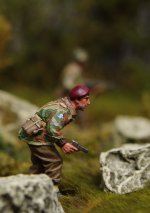
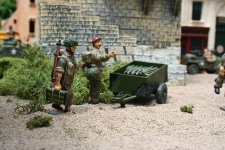 'where are my PIAT bombs?'
'where are my PIAT bombs?'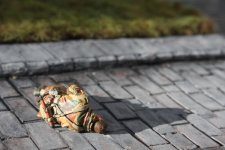
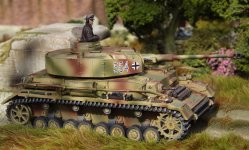
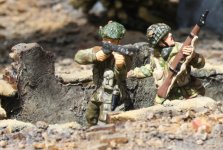
The 11th Parachute Battalion
All through his battalion's action, Lieutenant-Colonel McCardie understood that the South Staffords would be potentially supported by the 11th Parachute Battalion, located in full strength only a few hundred yards in the rear of the battle around the museum. After his two leading companies were pinned down, he sent up his third company to provide a firm base.
He then looked for a further force to attempt an outflanking move on the left, between the main road and the railway. It was a confined area, but it seemed to him to be the best avenue to renew the advance. McCardie's fourth company, C Company, would have carried out this move but it was temporarily leaderless and still well back.
Its commander, Major Phillip Wright, had set off to receive orders, but had been killed on the way.
View attachment 291658
As a result, McCardie looked to the 11th Battalion for this flanking attack. The 11[SUP]th[/SUP] Battalion commander, Lieutenant-Colonel George Lea, was willing to help. Major David Gilchrist's A Company moved forward to a position east of the hospital, between the road and the railway. Gilchrist's small Company HQ set up on the other side of the road, between his own men and Lieutenant-Colonel McCardie's 2[SUP]nd[/SUP] S. Staffs’ HQ.
Whilst he waited for the order to attack, Major Gilchrist discovered that the company jeep and trailer, loaded with all of the company's PIAT rounds, was missing. It had apparently reportedly been borrowed by the battalion padre for a burial, but not yet returned.
View attachment 291659 'where are my PIAT bombs?'
He then suffered a further set-back with a direct hit on his HQ, which killed CSM George Ashdown and wounded his second in command, Captain Peter Perse. No order to move came.
Gilchrist noted:
'So, there we were, waiting on our start line, the platoons north of the road invisible to the Germans and quite safe. We could hear shooting in front but couldn't see forward because of a hedge and the slope of the road.'
Major-General Urquhart now returned to command at Divisional HQ. Having seen some of the fighting in Arnhem, he did not approve of sending one battalion after another, piecemeal, into what he believed was an increasingly hopeless venture. He decided that, although it was too late to save the South Staffords, the 11th Battalion was not to take part in the battle being fought. An officer was sent with that instruction, timed at around 0900.
A senior officer was also sent to take control of the confused situation in this area, but he too was killed before he could have any effect.
View attachment 291662
To add to the 'chaos' (to quote Robin - see above), there was a two hour delay before Urquhart’s further orders reached the 11[SUP]th[/SUP] Battalion. In the meantime the 2[SUP]nd[/SUP] South Staffords were counter-attacked and overwhelmed, whilst waiting for the support of an outflanking move which never came.
Major Gilchrist describes the effect upon his company:
“Some of the South Staffs fell back through us. I met Major Cain, who said, 'The tanks are coming; give me a Piat.' I had to apologize that we hadn't any. So the South Staffs disappeared down the hill behind us, hotly pursued by German tanks and infantry.
View attachment 291660
We were outflanked and couldn't engage the tanks, but we were engaging infantry. We had a troop of 6-pounders in support, just behind us, but they couldn't engage the tanks because of the slope of the hill. We started to fall back, and about twenty of us took up position in some sixfoot-deep trenches just east of the hospital, probably dug as air-raid shelters.
We tried throwing Gammon bombs at the tanks, but it was not easy from those deep trenches, and we had no success. The tanks came to within thirty or forty yards and were firing on us.
View attachment 291661
After about a quarter of an hour of this, I realized we weren't achieving very much, stuck in the bottom of those trenches and not able to see what we were shooting at, so I decided that the group with me would break out to the north over the railway. That was quite hairy, because the railway cutting was fifty or sixty feet deep. There was a German tank on a bridge over the railway further up, shooting down the railway. We were young and fit in those days and we moved like hell, down the bank, over the rails and up the other side. A few men were hit by the tank's machine-gun, but most of us got across. We rather thought that the area we had come to would have been held by the rest of our 4th Parachute Brigade, which we expected to be up by now. We didn't know the Germans were there”.
Major Gilchrist and small party tried to take shelter in a house but were soon captured. The only one of A Company's officers to escape from that area was Lieutenant Arthur Vickers, with only a few men. Most of A Company were taken prisoner.
I am in the process of reading Middlebrook's book again for the 4th time and I recently read this particular section, so it's really cool to have it going along in miniature!
Scott
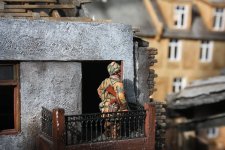
Thank you, I am glad you like it Scott, I am careful (I hope) not to plagiarize him.
The earlier sections on the XXX Corps breakout and with the 101st were from different sources, but I liked his focus on 1st Airborne more than the whole campaign for this bit.
His quotes from the vets are priceless, so I include them. I hope I am ok doing that and manage to illustrate them, but do not feel that paraphrasing them would do them justice.
Ref: Arnhem - 1944: The Airborne Battle by M. Middlebrook
View attachment 291712
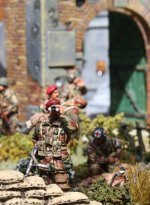

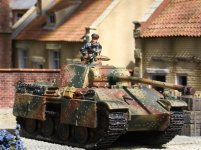
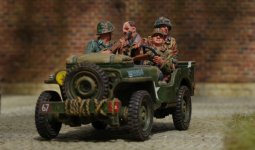
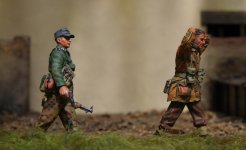
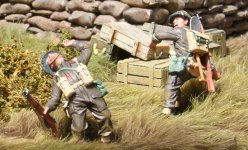
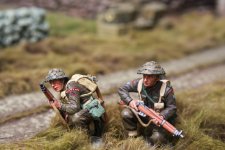 ...... 'get ready but keep your heads down'.
...... 'get ready but keep your heads down'.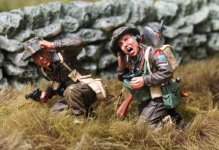 ..... 'we need artillery support'.
..... 'we need artillery support'.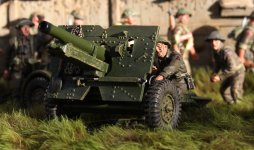 ...... 'open fire'!
...... 'open fire'!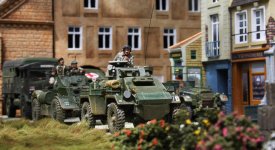
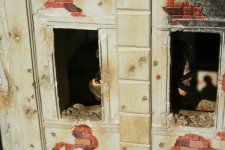
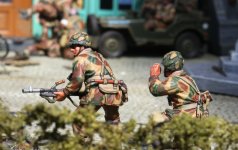
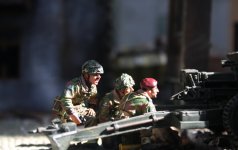
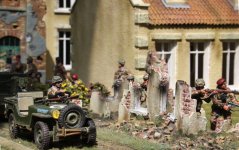
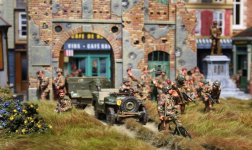
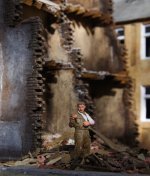
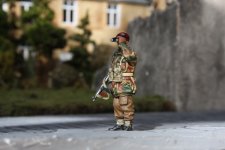
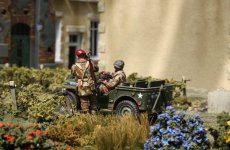
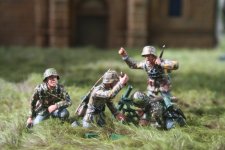
My thanks once again for continuing the story and again with some amazing scenes. Merry Christmas to you!
Cheers,
Grey
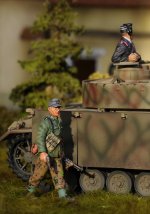
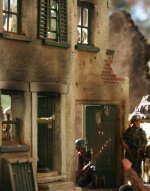
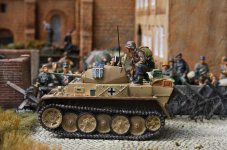
Brilliant images and narrative
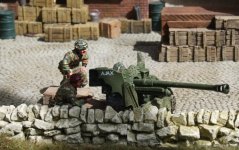 The officer directs the 6pdr ......
The officer directs the 6pdr ......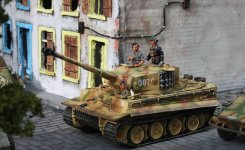 Tank advances down the street ...
Tank advances down the street ...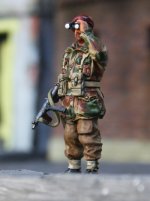 An officer points out the jeep .....
An officer points out the jeep .....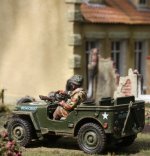 One hairy jeep journey ....
One hairy jeep journey ....
